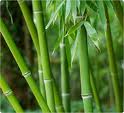Countries with tropical weather are natural homes for bamboo. It can be grown to any type of soil.
However, a good stand is observed in loose sandy loam soil with pH near neutrality. Many things have said regarding the benefits and usefulness of bamboo as a versatile material.
It is not only used for housing materials in the rural areas, but it is also used popularly in furnitures and handicrafts, banana plantation props, as fishing materials and in the making of the traditionally oriental trademarked chopsticks, notwithstanding, that it could also be a major source of vegetable shoot which could generate good income opportunities for both domestic and foreign markets.
Planting bamboo for vegetable shoot can be a profitable endeavor. It can be extensively grown even in steep mountain ranges and it can be a good export earner if cultivated it in a commercial scale.
The fresh bamboo shoots can be canned and preserved it in brine for export.
In its nutritional aspect, crude fat, crude fiber content and carbohydrates of bamboo shoot are low and that makes it an ideal vegetable for people wanting to reduce weight.
Besides, it contains eighteen amino acids. Its main nutritive values of bamboo shoot is associated with hematopoiesis, a regeneration of high energy containing compounds and improvement of protein metabolism.
Bamboo shoot production entails digging a hole of two meters wide by two meters long and by one meter deep in dimension and fill it with soil and composts.
Planting materials either in the form of cuttings or pre- rooted cuttings preferably should come from a year old culms rather than from an older ones although they can also be used.
The cuttings should have two or three nodes. A cutting with one whole inter node and two nodes is best. Inter nodes which are not hallow should not be used. The recommended distance of planting is eight meters by six meters.
The other way of propagating bamboo is by horizontal and vertical system. For the horizontal , the cuttings is laid horizontally in the hole with the eyes at the side and then covering it with two third layer of soil.
The vertical system is done by burying the lower node five centimeters below the surface of the node and soil, covering should reach the upper half of the next inter node.
For commercial scale of bamboo shoot production, it is necessary to follow recommended ways of controlling pests to ensure high productivity. Aphids and bacterial wilt attacks the bamboo.
Though aphids can be controlled by the use of pesticides the only way to minimize the occurrence of bacterial wilt is to take note that are planted with solanaceous crops, no planting of bamboos is recommended because there is no chemical control has been developed it yet so far to contain the problem.
Its fertilizer requirements for ten thousand square meters, recommends one hundred sixty kilograms nitrogen, forty kilogram phosphorus and one hundred twenty kilogram potassium and this is based on the Taiwan experience and environs.
To get appropriate fertilizer dosage in your locality one has to submit a soil sample of the area for analysis to where one intends to plant the bamboo.
The advantage of planting the bamboo is that one can plant it once, unlike other seasonal crops. The other advantage also is that it can be utilized as fencing material and windbreaker by planting around the perimeter of your farm and it cannot easily be destroyed by drought or by burning.
